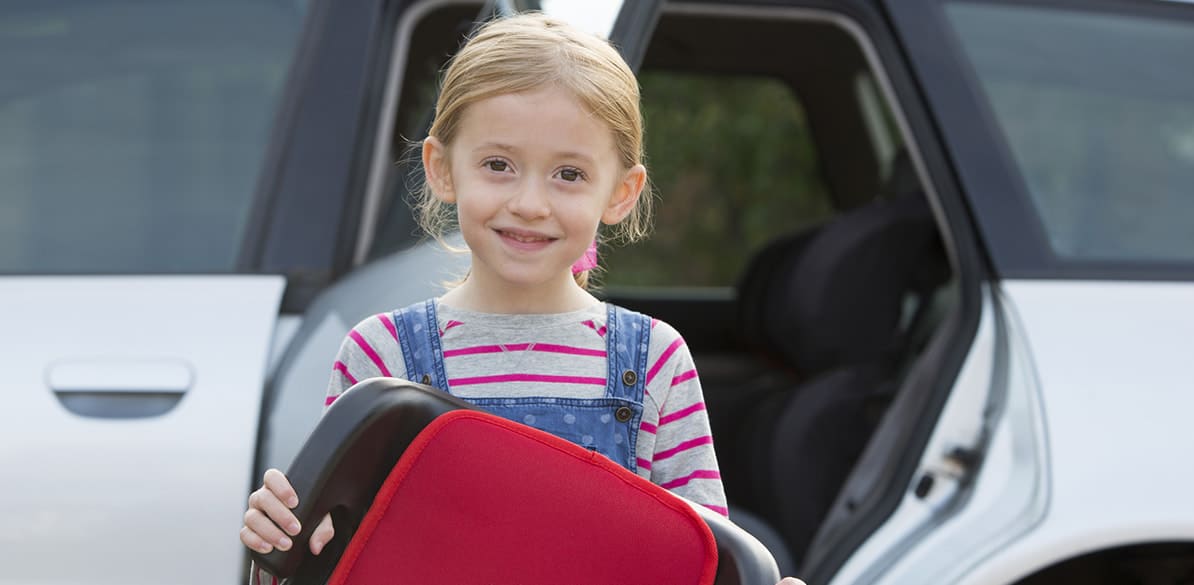Next-generation booster seats
What are they like and what level of safety do they provide?

Road Safety
For many years, booster seats have been disregarded for their lack of safety, especially in terms of in-vehicle side protection, and, in many cases, they have been considered more of a way to avoid getting fined, rather than a suitable child restraint system.
The truth is that, in crashes with a significant frontal component, booster seats allow the lap belt to press against the child’s pelvis without injuring more vulnerable parts, while the child’s elevation ensures that the chest part of the belt is moved away from the neck and correctly guided over the child’s shoulder. However, it is also true that in collisions with a lateral component, head protection is practically non-existent. In addition, the image of sleeping children with incorrectly positioned seat belts has helped to increase this negative image of the booster seat.
In the last 10 years, reputable research studies on these types of devices have changed the view of these child restraint systems, meaning that they are now considered adequate to provide children with a good level of safety.
The working principle behind these studies is based on how the vehicle itself is able to protect a child using the safety systems designed to protect adults, and, more specifically, how the seat belt and window airbag are able to minimize damage to a child’s head compared to a seat with a backrest.
The results of these studies have shown that in the event of a side collision, the vehicle protects the child as well or better than a seat with a backrest, as long as we make sure that there is contact between the window airbag and the child’s head.
In addition, it has been shown that backless booster seats cause the child’s head to be placed in a more rearward starting position and, therefore, since the head movement in a crash will be similar, having the head further back improves the survival space inside the vehicle.
These two criteria have prompted the development of a new amendment to UN Regulation 129, which has resulted in a new generation of booster seats that ensure head contact with the window airbag for children between 125 cm and 150 cm in height. These booster seats make sure the child’s head is always positioned more than 770 mm above the seat base.
In order to meet these criteria for contact between the child’s head and the head airbag, there is a small problem: children grow. So child restraint manufacturers have had to devise booster seats that allow the height of the child’s head to be adjusted to ensure contact with the window airbag in the event of an accident.
The final product is a height-adjustable booster seat that adapts to the height of the child.
We will gradually see these booster seats appear on the market, which will replace the Regulation 44 booster seats currently available.
In general, these next-generation booster seats are larger, taller and can be height adjusted.
The function of these devices must be clear and defined, according to the height of the child, which we all know. The adjustment of the booster seat must ensure the minimum head position that guarantees the optimum protection for the child.
When should we use or recommend these next-generation booster seats? It is clear that in terms of child safety there are important factors that the standards unfortunately do not take into consideration, since they are not repeatable and reproducible, which is the basic principle of any standard.
With regard to the next-generation booster seats, in which safety under optimal conditions is guaranteed, there is the risk of what experts call being “out-of-position”. This simply refers to the variables of the child’s position within the restraint system, which are not contemplated in the regulatory crash tests.
One of the most common of these positions is when the child falls asleep. There is no lateral support in these devices to ensure that the seat belt sits in the correct position, so in the event of a crash the belt could be incorrectly positioned.
The conclusion is that recommending the use of a next-generation booster seat compared to a booster seat with a backrest is defined by how long it is used for. When we know that the child will not fall asleep, normally on short journeys of less than 30 minutes, it will be sufficient, while on longer journeys, the recommendation would be to use a booster seat with a backrest that guarantees the correct position of the child if they fall asleep.
